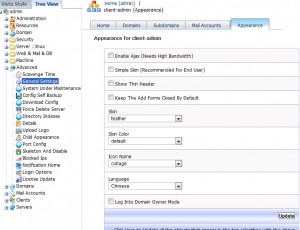Executor框架使用Runnable 作为其基本的任务表示形式。Runnable是一种有局限性的抽象,然后可以写入日志,或者共享的数据结构,但是他不能返回一个值。
许多任务实际上都是存在延迟计算的:执行数据库查询,从网络上获取资源,或者某个复杂耗时的计算。对于这种任务,Callable是一个更好的抽象,他能返回一个值,并可能抛出一个异常。Future表示一个任务的周期,并提供了相应的方法来判断是否已经完成或者取消,以及获取任务的结果和取消任务。
|
1
2
3
4
5
6
7
8
9
10
11
12
13
14
15
16
17
18
19
20
21
22
23
24
25
26
27
28
29
30
31
32
33
34
35
36
37
38
39
40
41
42
43
44
45
46
47
48
49
50
51
52
53
54
55
56
57
58
59
60
61
62
63
64
65
66
67
68
69
70
71
72
73
74
75
|
public interface Callable<V> { /** * Computes a result, or throws an exception if unable to do so. * * @return computed result * @throws Exception if unable to compute a result */ V call() throws Exception; }
public interface Future<V> {
/**
* Attempts to cancel execution of this task. This attempt will
* fail if the task has already completed, has already been cancelled,
* or could not be cancelled for some other reason. If successful,
* and this task has not started when <tt>cancel</tt> is called,
* this task should never run. If the task has already started,
* then the <tt>mayInterruptIfRunning</tt> parameter determines
* whether the thread executing this task should be interrupted in
* an attempt to stop the task.
*
* <p>After this method returns, subsequent calls to {@link #isDone} will
* always return <tt>true</tt>. Subsequent calls to {@link #isCancelled}
* will always return <tt>true</tt> if this method returned <tt>true</tt>.
*
* @param mayInterruptIfRunning <tt>true</tt> if the thread executing this
* task should be interrupted; otherwise, in-progress tasks are allowed
* to complete
* @return <tt>false</tt> if the task could not be cancelled,
* typically because it has already completed normally;
* <tt>true</tt> otherwise
*/
boolean cancel(boolean mayInterruptIfRunning);
/**
* Returns <tt>true</tt> if this task was cancelled before it completed
* normally.
*
* @return <tt>true</tt> if this task was cancelled before it completed
*/
boolean isCancelled();
/**
* Returns <tt>true</tt> if this task completed.
*
* Completion may be due to normal termination, an exception, or
* cancellation -- in all of these cases, this method will return
* <tt>true</tt>.
*
* @return <tt>true</tt> if this task completed
*/
boolean isDone();
/**
* Waits if necessary for the computation to complete, and then
* retrieves its result.
*
* @return the computed result
* @throws CancellationException if the computation was cancelled
* @throws ExecutionException if the computation threw an
* exception
* @throws InterruptedException if the current thread was interrupted
* while waiting
*/
V get() throws InterruptedException, ExecutionException;
/**
* Waits if necessary for at most the given time for the computation
* to complete, and then retrieves its result, if available.
*
* @param timeout the maximum time to wait
* @param unit the time unit of the timeout argument
* @return the computed result
* @throws CancellationException if the computation was cancelled
* @throws ExecutionException if the computation threw an
* exception
* @throws InterruptedException if the current thread was interrupted
* while waiting
* @throws TimeoutException if the wait timed out
*/
V get(long timeout, TimeUnit unit)
throws InterruptedException, ExecutionException, TimeoutException;
}
|
可以通过多种方法来创建一个Future来描述任务。ExecutorService中的submit方法接受一个Runnable或者Callable,然后返回一个Future来获得任务的执行结果或者取消任务。
|
1
2
3
4
5
6
7
8
9
10
11
12
13
14
15
16
17
18
19
20
21
22
23
24
25
26
27
28
29
30
31
32
33
34
35
36
37
38
39
40
41
42
43
44
45
46
47
48
49
50
|
/**
* Submits a value-returning task for execution and returns a
* Future representing the pending results of the task. The
* Future's <tt>get</tt> method will return the task's result upon
* successful completion.
*
* <p>
* If you would like to immediately block waiting
* for a task, you can use constructions of the form
* <tt>result = exec.submit(aCallable).get();</tt>
*
* <p> Note: The {@link Executors} class includes a set of methods
* that can convert some other common closure-like objects,
* for example, {@link java.security.PrivilegedAction} to
* {@link Callable} form so they can be submitted.
*
* @param task the task to submit
* @return a Future representing pending completion of the task
* @throws RejectedExecutionException if the task cannot be
* scheduled for execution
* @throws NullPointerException if the task is null
*/
<T> Future<T> submit(Callable<T> task);
/**
* Submits a Runnable task for execution and returns a Future
* representing that task. The Future's <tt>get</tt> method will
* return the given result upon successful completion.
*
* @param task the task to submit
* @param result the result to return
* @return a Future representing pending completion of the task
* @throws RejectedExecutionException if the task cannot be
* scheduled for execution
* @throws NullPointerException if the task is null
*/
<T> Future<T> submit(Runnable task, T result);
/**
* Submits a Runnable task for execution and returns a Future
* representing that task. The Future's <tt>get</tt> method will
* return <tt>null</tt> upon <em>successful</em> completion.
*
* @param task the task to submit
* @return a Future representing pending completion of the task
* @throws RejectedExecutionException if the task cannot be
* scheduled for execution
* @throws NullPointerException if the task is null
*/
Future<?> submit(Runnable task);
|
另外ThreadPoolExecutor中的newTaskFor(Callable<T> task) 可以返回一个FutureTask。
假设我们通过一个方法从远程获取一些计算结果,假设方法是 List getDataFromRemote(),如果采用同步的方法,代码大概是 List data = getDataFromRemote(),我们将一直等待getDataFromRemote返回,然后才能继续后面的工作,这个函数是从远程获取计算结果的,如果需要很长时间,后面的代码又和这个数据没有什么关系的话,阻塞在那里就会浪费很多时间。我们有什么办法可以改进呢???
能够想到的办法是调用函数后,立即返回,然后继续执行,等需要用数据的时候,再取或者等待这个数据。具体实现有两种方式,一个是用Future,另一个是回调。
|
1
2
3
|
Future<List> future = getDataFromRemoteByFuture();
//do something....
List data = future.get();
|
可以看到我们返回的是一个Future对象,然后接着自己的处理后面通过future.get()来获得我们想要的值。也就是说在执行getDataFromRemoteByFuture的时候,就已经启动了对远程计算结果的获取,同时自己的线程还继续执行不阻塞。知道获取时候再拿数据就可以。看一下getDataFromRemoteByFuture的实现:
|
1
2
3
4
5
6
7
8
9
|
private Future<List> getDataFromRemoteByFuture() {
return threadPool.submit(new Callable<List>() {
@Override
public List call() throws Exception {
return getDataFromRemote();
}
});
}
|
我们在这个方法中调用getDataFromRemote方法,并且用到了线程池。把任务加入线程池之后,理解返回Future对象。Future的get方法,还可以传入一个超时参数,用来设置等待时间,不会一直等下去。
也可以利用FutureTask来获取结果:
|
1
2
3
4
5
6
7
8
9
|
FutureTask<List> futureTask = new FutureTask<List>(new Callable<List>() {
@Override
public List call() throws Exception {
return getDataFromRemote();
}
});
threadPool.submit(futureTask);
futureTask.get();
|
FutureTask是一个具体的实现类,ThreadPoolExecutor的submit方法返回的就是一个Future的实现,这个实现就是FutureTask的一个具体实例,FutureTask帮助实现了具体的任务执行,以及和Future接口中的get方法的关联。
FutureTask除了帮助ThreadPool很好的实现了对加入线程池任务的Future支持外,也为我们提供了很大的便利,使得我们自己也可以实现支持Future的任务调度。
补充知识:多线程中Future与FutureTask的区别和联系
线程的创建方式中有两种,一种是实现Runnable接口,另一种是继承Thread,但是这两种方式都有个缺点,那就是在任务执行完成之后无法获取返回结果,于是就有了Callable接口,Future接口与FutureTask类的配和取得返回的结果。
我们先回顾一下java.lang.Runnable接口,就声明了run(),其返回值为void,当然就无法获取结果。
|
1
2
3
|
public interface Runnable {
public abstract void run();
}
|
而Callable的接口定义如下
|
1
2
3
|
public interface Callable<V> {
V call() throws Exception;
}
|
该接口声明了一个名称为call()的方法,同时这个方法可以有返回值V,也可以抛出异常。嗯,对该接口我们先了解这么多就行,下面我们来说明如何使用,前篇文章我们说过,无论是Runnable接口的实现类还是Callable接口的实现类,都可以被ThreadPoolExecutor或ScheduledThreadPoolExecutor执行,ThreadPoolExecutor或ScheduledThreadPoolExecutor都实现了ExcutorService接口,而因此Callable需要和Executor框架中的ExcutorService结合使用,我们先看看ExecutorService提供的方法:
|
1
2
3
|
<T> Future<T> submit(Callable<T> task);
<T> Future<T> submit(Runnable task, T result);
Future<?> submit(Runnable task);
|
第一个方法:submit提交一个实现Callable接口的任务,并且返回封装了异步计算结果的Future。
第二个方法:submit提交一个实现Runnable接口的任务,并且指定了在调用Future的get方法时返回的result对象。(不常用)
第三个方法:submit提交一个实现Runnable接口的任务,并且返回封装了异步计算结果的Future。
因此我们只要创建好我们的线程对象(实现Callable接口或者Runnable接口),然后通过上面3个方法提交给线程池去执行即可。还有点要注意的是,除了我们自己实现Callable对象外,我们还可以使用工厂类Executors来把一个Runnable对象包装成Callable对象。Executors工厂类提供的方法如下:
public static Callable<Object> callable(Runnable task)
public static <T> Callable<T> callable(Runnable task, T result)
2.Future<V>接口
Future<V>接口是用来获取异步计算结果的,说白了就是对具体的Runnable或者Callable对象任务执行的结果进行获取(get()),取消(cancel()),判断是否完成等操作。我们看看Future接口的源码:
|
1
2
3
4
5
6
7
|
public interface Future<V> {
boolean cancel(boolean mayInterruptIfRunning);
boolean isCancelled();
boolean isDone();
V get() throws InterruptedException, ExecutionException;
V get(long timeout, TimeUnit unit) throws InterruptedException, ExecutionException, TimeoutException;
}
|
方法解析:
V get() :获取异步执行的结果,如果没有结果可用,此方法会阻塞直到异步计算完成。
V get(Long timeout , TimeUnit unit) :获取异步执行结果,如果没有结果可用,此方法会阻塞,但是会有时间限制,如果阻塞时间超过设定的timeout时间,该方法将抛出异常。
boolean isDone() :如果任务执行结束,无论是正常结束或是中途取消还是发生异常,都返回true。
boolean isCanceller() :如果任务完成前被取消,则返回true。
boolean cancel(boolean mayInterruptRunning) :如果任务还没开始,执行cancel(…)方法将返回false;如果任务已经启动,执行cancel(true)方法将以中断执行此任务线程的方式来试图停止任务,如果停止成功,返回true;当任务已经启动,执行cancel(false)方法将不会对正在执行的任务线程产生影响(让线程正常执行到完成),此时返回false;当任务已经完成,执行cancel(…)方法将返回false。mayInterruptRunning参数表示是否中断执行中的线程。
通过方法分析我们也知道实际上Future提供了3种功能:(1)能够中断执行中的任务(2)判断任务是否执行完成(3)获取任务执行完成后额结果。
但是我们必须明白Future只是一个接口,我们无法直接创建对象,因此就需要其实现类FutureTask登场啦。
3.FutureTask类
我们先来看看FutureTask的实现
|
1
2
3
4
5
|
public class FutureTask<V> implements RunnableFuture<V> {
FutureTask类实现了RunnableFuture接口,我们看一下RunnableFuture接口的实现:
public interface RunnableFuture<V> extends Runnable, Future<V> {
void run();
}
|
分析:FutureTask除了实现了Future接口外还实现了Runnable接口(即可以通过Runnable接口实现线程,也可以通过Future取得线程执行完后的结果),因此FutureTask也可以直接提交给Executor执行。
最后我们给出FutureTask的两种构造函数:
|
1
2
3
4
|
public FutureTask(Callable<V> callable) {
}
public FutureTask(Runnable runnable, V result) {
}
|
4.Callable<V>/Future<V>/FutureTask的使用 (封装了异步获取结果的Future!!!)
通过上面的介绍,我们对Callable,Future,FutureTask都有了比较清晰的了解了,那么它们到底有什么用呢?我们前面说过通过这样的方式去创建线程的话,最大的好处就是能够返回结果,加入有这样的场景,我们现在需要计算一个数据,而这个数据的计算比较耗时,而我们后面的程序也要用到这个数据结果,那么这个时 Callable岂不是最好的选择?我们可以开设一个线程去执行计算,而主线程继续做其他事,而后面需要使用到这个数据时,我们再使用Future获取不就可以了吗?下面我们就来编写一个这样的实例
4.1 使用Callable+Future获取执行结果
Callable实现类如下:
|
1
2
3
4
5
6
7
8
9
10
11
12
13
14
15
16
17
18
19
20
21
22
|
package com.zejian.Executor;
import java.util.concurrent.Callable;
/**
* @author zejian
* @time 2016年3月15日 下午2:02:42
* @decrition Callable接口实例
*/
public class CallableDemo implements Callable<Integer> {
private int sum;
@Override
public Integer call() throws Exception {
System.out.println("Callable子线程开始计算啦!");
Thread.sleep(2000);
for(int i=0 ;i<5000;i++){
sum=sum+i;
}
System.out.println("Callable子线程计算结束!");
return sum;
}
}
|
Callable执行测试类如下:
|
1
2
3
4
5
6
7
8
9
10
11
12
13
14
15
16
17
18
19
20
21
22
23
24
25
26
27
28
29
30
31
32
33
34
35
36
37
38
|
package com.zejian.Executor;
import java.util.concurrent.ExecutorService;
import java.util.concurrent.Executors;
import java.util.concurrent.Future;
/**
* @author zejian
* @time 2016年3月15日 下午2:05:43
* @decrition callable执行测试类
*/
public class CallableTest {
public static void main(String[] args) {
//创建线程池
ExecutorService es = Executors.newSingleThreadExecutor();
//创建Callable对象任务
CallableDemo calTask=new CallableDemo();
//提交任务并获取执行结果
Future<Integer> future =es.submit(calTask);
//关闭线程池
es.shutdown();
try {
Thread.sleep(2000);
System.out.println("主线程在执行其他任务");
if(future.get()!=null){
//输出获取到的结果
System.out.println("future.get()-->"+future.get());
}else{
//输出获取到的结果
System.out.println("future.get()未获取到结果");
}
} catch (Exception e) {
e.printStackTrace();
}
System.out.println("主线程在执行完成");
}
}
|
执行结果:
Callable子线程开始计算啦!
主线程在执行其他任务
Callable子线程计算结束!
future.get()–>12497500
主线程在执行完成
4.2 使用Callable+FutureTask获取执行结果
|
1
2
3
4
5
6
7
8
9
10
11
12
13
14
15
16
17
18
19
20
21
22
23
24
25
26
27
28
29
30
31
32
33
34
35
36
37
38
39
40
41
42
43
44
45
46
47
48
49
50
|
package com.zejian.Executor;
import java.util.concurrent.ExecutorService;
import java.util.concurrent.Executors;
import java.util.concurrent.Future;
import java.util.concurrent.FutureTask;
/**
* @author zejian
* @time 2016年3月15日 下午2:05:43
* @decrition callable执行测试类
*/
public class CallableTest {
public static void main(String[] args) {
// //创建线程池
// ExecutorService es = Executors.newSingleThreadExecutor();
// //创建Callable对象任务
// CallableDemo calTask=new CallableDemo();
// //提交任务并获取执行结果
// Future<Integer> future =es.submit(calTask);
// //关闭线程池
// es.shutdown();
//创建线程池
ExecutorService es = Executors.newSingleThreadExecutor();
//创建Callable对象任务
CallableDemo calTask=new CallableDemo();
//创建FutureTask
FutureTask<Integer> futureTask=new FutureTask<>(calTask);
//执行任务
es.submit(futureTask);
//关闭线程池
es.shutdown();
try {
Thread.sleep(2000);
System.out.println("主线程在执行其他任务");
if(futureTask.get()!=null){
//输出获取到的结果
System.out.println("futureTask.get()-->"+futureTask.get());
}else{
//输出获取到的结果
System.out.println("futureTask.get()未获取到结果");
}
} catch (Exception e) {
e.printStackTrace();
}
System.out.println("主线程在执行完成");
}
}
|
执行结果:
Callable子线程开始计算啦!
主线程在执行其他任务
Callable子线程计算结束!
futureTask.get()–>12497500
主线程在执行完成
以上这篇java多线程之Future和FutureTask使用实例就是小编分享给大家的全部内容了,希望能给大家一个参考,也希望大家多多支持快网idc。
原文链接:https://blog.csdn.net/weixin_43469563/article/details/108830688
相关文章
- 64M VPS建站:是否适合初学者操作和管理? 2025-06-10
- ASP.NET自助建站系统中的用户注册和登录功能定制方法 2025-06-10
- ASP.NET自助建站系统的域名绑定与解析教程 2025-06-10
- 个人服务器网站搭建:如何选择合适的服务器提供商? 2025-06-10
- ASP.NET自助建站系统中如何实现多语言支持? 2025-06-10
- 2025-07-10 怎样使用阿里云的安全工具进行服务器漏洞扫描和修复?
- 2025-07-10 怎样使用命令行工具优化Linux云服务器的Ping性能?
- 2025-07-10 怎样使用Xshell连接华为云服务器,实现高效远程管理?
- 2025-07-10 怎样利用云服务器D盘搭建稳定、高效的网站托管环境?
- 2025-07-10 怎样使用阿里云的安全组功能来增强服务器防火墙的安全性?
快网idc优惠网
QQ交流群
-
2025-05-27 84
-
2025-05-25 60
-
2025-05-25 114
-
2025-05-26 45
-
2025-05-27 85









